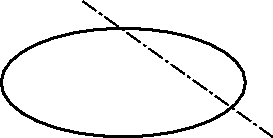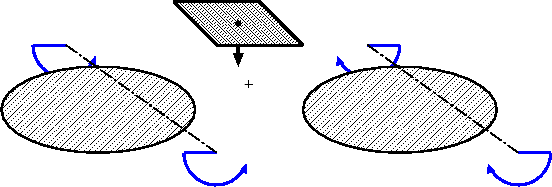A Few Notions of Geometry |

|

|

|

|
|
A Few Notions of Geometry |

|

|

|

|
If an airbag is to be folded and the exact location of the fold is known, the following situation would apply:

Figure 1: An unfolded airbag and the fold line.
In order to perform a fold, more information is needed as there are four fold possibilities: the fold may be executed upside (Figure 2) or downside (Figure 3). In each case the fold may executed to the left or to the right side of the fold line.

Figure 2: The two possible "upside" folds.

Figure 3: The two possible "downside" folds.
First, it is necessary to determine if an "up" or a "down" fold is to be performed. This information is given to the program using the notion of the "airbag plane". This plane must be defined prior to the execution of the fold. The airbag plane is oriented and hence has a normal vector, and this vector determines which side—up or down—the fold will be directed to.
After the airbag plane has been defined, it is necessary to indicate to the program whether the fold should be performed to the left (right side overlaps the left side, which remains in place) or to the right. This information is given to the program using the orientation of the fold line and the left hand rule.
To apply the left hand rule, place your thumb in the direction of the fold line. The other fingers will indicate the direction of the fold.
Remember: for every fold definition, it is necessary to define an oriented plane and an oriented line (sometimes two), plus other parameters which will be described later.